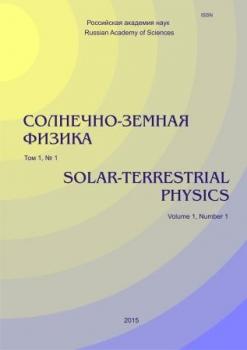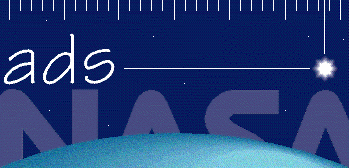Пекин, Китайская Народная Республика
Университет Китайской академии наук
Пекин, Китайская Народная Республика
Государственная главная лаборатория космической пого-ды, Академия наук КНР
Пекин, Китайская Народная Республика
В данной работе предлагается новый алгоритм повышения четкости изображений, использующий направленную фильтрацию для улучшения изображений и видеоизображений Солнца, который позволит легко выделять существенные мелкие структуры. Предлагаемый алгоритм может эффективно устранять шумы на изображениях, в том числе гауссовы и импульсные шумы. Кроме того, он может выделять волокнистые структуры на/за солнечным диском. Такие структуры наглядно демонстрируют развитие солнечной вспышки, протуберанца, выброса корональной массы, магнитного поля и т. д. Полученные экспериментальные результаты показывают, что предложенный алгоритм значительно повышает качество изображений Солнца по сравнению с первоначальными и несколькими классическими алгоритмами улучшения изображений, что облегчит определение всплесков солнечного радиоизлучения по изображениям/ видеоизображениям Солнца.
направленный фильтр, гауссов фильтр, двусторонний фильтр, сохранение краев, повышение качества изображения
INTRODUCTION
When acquired and transmitted, images may be contaminated by noises. Therefore, images are usually denoised [Lu, Jian, et al., 2008; Sun, Xiaoli, Min Li, Weiqiang Zhang, 2011; Chen, Bo, et al., 2012; Han, Yu, et al., 2014; Wang, Jiefei, et al., 2016] before being displayed. A Gaussian filter can efficiently eliminate noises from images, especially addictive image noises, like Gaussian white noise. However, it may destroy edges of
an image while denosing. The filter implements the image filtering task regardless of image content. Specifically, its weights for averaging nearby pixels over a pixel depend only on Euclidian distances of the nearby pixels to this central pixel. They are independent of intensities of pixels of an image in processing. Thus, the Gaussian filter would result in smoothed edges as it is across edges. To overcome this shortcoming of the filter, it should depend on the image content, i.e. the weights should be given not only by pixel position but also by pixel intensities of an image. For this purpose, edge-preserving filters have been developed and widely used for image processing. It can well preserve edges of objects in an image while denosing it.
A bilateral filter is the most popular of edge-preserving filters [Tomasi, Manduchi, 1998; Chen Xu, Min Li, Xiaoli Sun, 2013]. It is a non-linear, edge-preserving and noise-reducing smoothing filter for images. During image processing, the intensity value at each pixel in an image is replaced by a weighted average of intensity values of nearby pixels. The weights depend not only on the Euclidean distance of nearby pixels to the central pixel, but also on intensity values of nearby pix-els. We can thus preserve sharp edges in an image while denosing it. Despite being so popular, the bilateral filter has a number of flaws. It may suffer from “gradient reversal” artifacts, as discussed in [Durand, Dorsey, 2002; Bae, Paris, Durand, 2006]. The reason is that when a pixel (often on an edge) has few similar pixels around it, the Gaussian weighted average is unstable. In this case, the filter results may exhibit unwanted profiles around edges [He, Sun, Tang, 2013]. Another flaw of this filter is its high computational complexity.
1. Bae S., Paris S., Durand F. Two-scale tone management for photographic look. SIGGRAPH’06. Proc. ACM SIGGRAPH 2006. Boston, Massachusetts, 2006.
2. Bo Chen, Jin-Lin Cai, Wen-Sheng Chen, Yan Li. A multiplicative noise removal approach based on partial differential equation model. Mathematical Problems in Engineering. 2012, vol. 2012, ID 242043, 14 p. DOI:https://doi.org/10.1155/2012/242043.
3. Briggs W.L., Henson V.E., McCormick S.F. A Multigrid Tutorial. Second ed. Society for Industrial and Applied Mathematics (SIAM). 2000.
4. Bundy A., Lincoln Wallen. Difference of Gaussians. Catalogue of Artificial Intelligence Tools. Springer Berlin Heidelberg, 1984, p. 30.
5. Chen Xu, Min Li, Xiaoli Sun. An edge-preserving variational method for image decomposition. Chinese J. Electronics. 2013, vol. 22, no. 1, pp. 109-113.
6. Durand F., Dorsey J. Fast Bilateral Filtering for the Display of High-Dynamic-Range Images. SIGGRAPH’02. Proc. 29th Annual Conf. on Computer Graphics and Interactive Technolo-gies, San Antonio, Texas, 2002.
7. Gastal E.S.L., Oliveira M.M. Domain transform for edge-aware image and video processing. ACM Trans. Graphics. 2011, vol. 30, no. 4, pp. 69:1-69:12.
8. Han Yu, et al. Multiplicative noise removal combining a total variation regularizer and a nonconvex regularizer. Intern. J. Computer Math. 2014, vol. 91, no. 10, pp. 2243-2259.
9. He K., Sun J., Tang X. Guided image filtering. IEEE Trans. Pattern Analysis and Machine Intelligence. 2013, vol. 35, no. 6, pp. 1397-1409.
10. Huang T., Yang G., Tang G. A fast two-dimensional median filtering algorithm. IEEE Transactions on Acoustics, Speech, and Signal Processing. 1979, vol. 27, no. 1, pp. 13-18.
11. Kim Sang Ho, Jan P. Allebach. Optimal unsharp mask for image sharpening and noise removal. J. Electronic Imaging. 2005, vol. 14, no. 2, pp. 023005-023005.
12. Li Jingna, Li Xia. Symplectic flow for the square root of the negative Laplacian. J. Mathematical Analysis and Applications. 2012, vol. 389, pp. 812-820.
13. Li Xia, Zheng An Yao, Wen Shu Zhou. Existence of positive solutions for a singular p-Laplacian differential equation. Acta Mathematica Sinica. 2008, vol. 24, no. 8, pp. 1331-1344.
14. Lu Jian, et al. An enhanced fractal image denoising algorithm. Chaos, Solitons & Fractals. 2008, vol. 38, no. 4, pp. 1054-1064. DOI:https://doi.org/10.1016/j.chaos.2007.06.048.
15. Saad Y. Iterative Methods for Sparse Linear Systems. Society for Industrial and Applied Mathematics (SIAM), 2003. 528 p.
16. Song Huijuan, Jingxue Yin, Ying Yang. Multiplicity of positive radial solutions for the weighted p-Laplacian in Rn∖{0}. Computers & Mathematics with Applications. 2013, vol. 66, no. 8. pp. 1475-1487.
17. Sun Jiebao, Jing Li, Qiang Liu. Cauchy problem of a nonlocal p-Laplacian evolution equation with nonlocal convection. Nonlinear Analysis: Theory, Methods & Applications. 2014, vol. 95, pp. 691-702.
18. Sun Xiaoli, Min Li, Weiqiang Zhang. An im-proved image denoising model based on the directed diffusion equation. Computers & Mathematics with Applications. 2011, vol. 61, no. 8, pp. 2177-2181.
19. Tomasi C., Manduchi R. Bilateral filtering for gray and color images. Proc. 1998 IEEE Intern. Conf. on Computer Vision, Bombay, India. 1998, p. 839.
20. Wang Jiefei, et al. A Residual-Based Kernel Regression Method for Image Denoising. Mathematical Problems in Engineering 2016, vol. 2016, ID 5245948, 13 p. DOI: http://dx.doi. org/10.1155/2016/5245948.


















